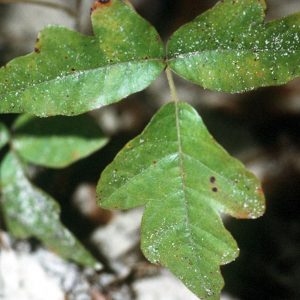
A Burger at Tessaro’s
June 1, 2018
Exploring McConnells Mill State Park
June 7, 2018The adage, “Leaves of three, let them be” is an always present and clear reminder to be aware of your surroundings and keep a healthy distance from the itch inducing plant: poison ivy. However, while charming, this simple rhyme grossly underestimates the amount of poisonous plants lurking in Pennsylvania. Luckily, below is a compiled list of common poisonous plants (in the Western Pennsylvania region) that is sure to greatly expand wilderness knowledge and safety, as well as help to alleviate the impending doom of an unwelcome rash.

Giant Hogweed
This devilish plant looks about as pleasant as it sounds. With substantial, bright green stalks, white flower-heads and leaves marked with deep red spots, this poisonous plant harbors deeply toxic sap that causes Phytophotodermatitis. Such a reaction is marked by severe burn-like blisters that spread over the entire body. If contact is made with Giant Hogweed, it is imperative that the affected area is thoroughly scrubbed with soap and water. If blisters start to appear, contact your doctor immediately and seek medical attention.

Poison Ivy
This common plant has practically become the poster child for summertime rashes. It’s rampant in Western Pennsylvania and easily identifiable: smoothed-edged “leaves of three”. It is important to be aware of your surroundings and shower after hiking, gardening, or spending extensive time outdoors. Don’t forget to wash your clothes separately, as well. After coming into contact with the plant, be sure to wash the affected areas with soapy water and apply over the counter medications (i.e. calamine lotion). Monitor the area and ensure that the rash does not spread. If the rash continues to worsen, seek out medical attention.

Poison Oak
Similar to Poison Ivy, this plant releases oil (urushiol) that causes an itchy rash and blisters. Known for its shrub-like appearance, Poison Oak displays three leaflets (as opposed to three leaves). In the spring and summer, the plant is able to produce small white, yellow or even green flowers. When treating a Poison on Oak rash, like other rashes, be sure to wash the affected area with soap and water. At home treatment also consists of applying calamine lotion and washing the area regularly.

Virginia Creeper
This devious plant grows quickly in long, continuous vines that choke trees of vital nutrients and cause a less than desirable rash on the skin. Unlike other poisonous plants, merely touching the plant does not cause a reaction. When the vine—or its leaves or berries—are crushed, a toxic liquid is released. This liquid causes irritation to the skin.
a href=”https://positivelypittsburgh.com/wp-content/uploads/2018/06/Wild-Parsnip.jpg”>
Wild Parsnip<
As an invasive species, Wild Parsnip has made itself at home in many parts of the U.S., Pennsylvania included. The thick stalks that house hundreds of umbrellate, or yellow flowers, is the identifiable characteristic. This plant can cause horrible burns that result in pus-filled and painful blisters. These blisters could lead to lasting scars. Because of its high toxicity, it is imperative that this plant is not disturbed. Immediate medical attention should be sought if contact is made with the plant.
Before we go, here’s some general advice for dealing with poisonous plants:
- It is always important to shower and wash your clothes after spending time outside where poisonous plants may grow. Not only will this greatly reduce the risk of an allergic reaction, but it will also limit the spread of the oils to other surfaces (or people).
- Additionally, it is important to remember to be especially careful when weed whacking. This can cause the oils and saps to spread everywhere.
- Burning these plants can cause anyone around to breath in the fumes of the oil and infect the lungs. This will almost surely end in a visit to the hospital, or even intensive care.




